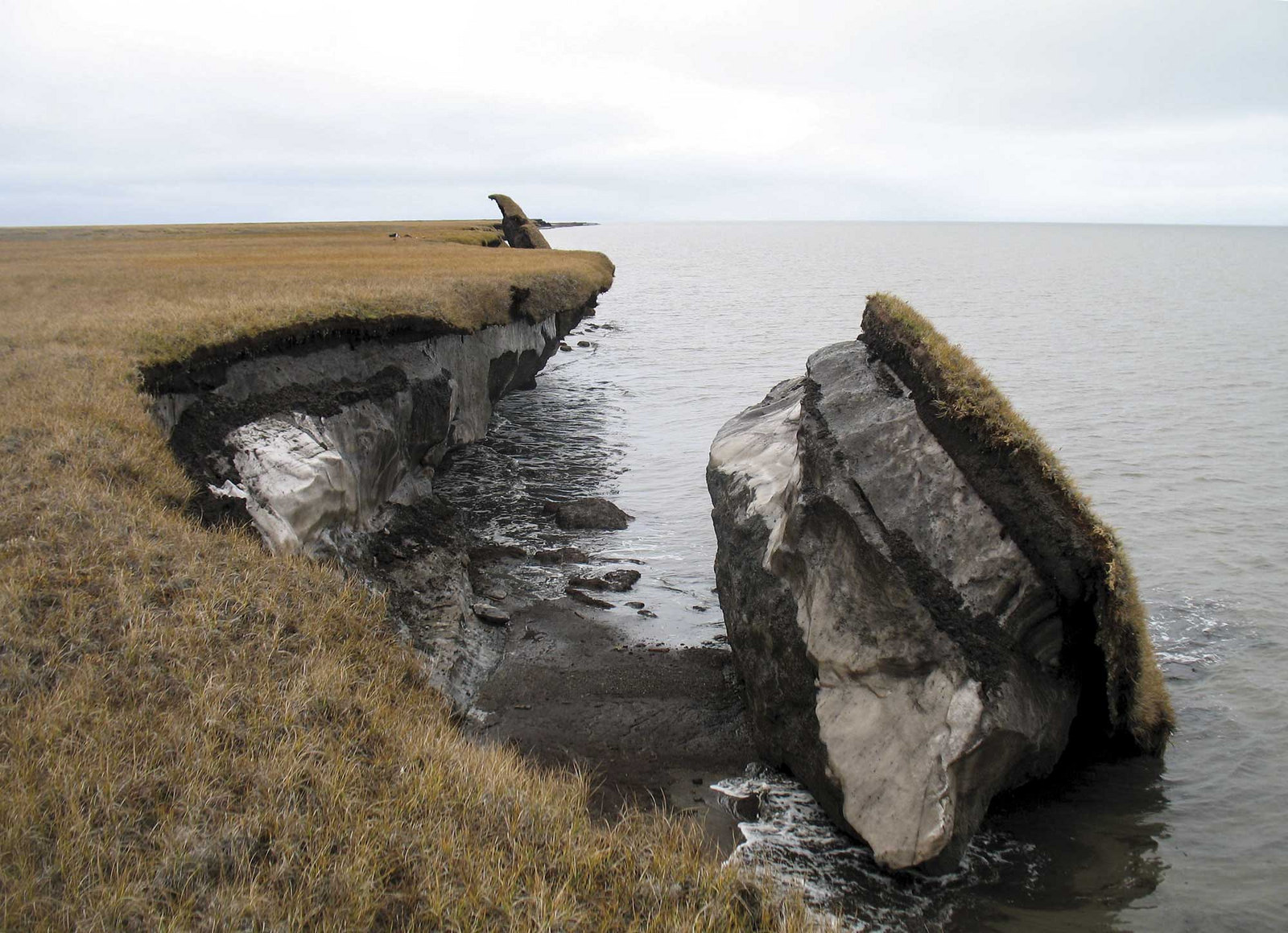Arctic coastal erosion isn’t just a byproduct of climate change — it also contributes to it
New research finds that permafrost crumbling into the ocean is a major contributor to spikes in greenhouse gases.

Thousands of years ago, at the end of the last glacial period, carbon dioxide in the atmosphere shot up suddenly on three separate occasions — about 11,500, 14,600 and 16,500 years ago, to be exact.
Why? A team of researchers from the Alfred Wegener Institute Helmholtz Centre for Polar and Marine Research headed to the Sea of Okhotsk on the eastern coast of Russia, looking for answers.
At first, they wrote this week in the journal Nature Communications, they thought rivers might have carried plant matter into the ocean, and the plants then decomposed and gave off greenhouse gases. So the researchers pulled sediment samples from the sea bed.
What they found surprised them.
Yes, the river had deposited some plant matter into the sea as they had expected.
But beneath that layer, there was an even deeper layer of sediment that had come from somewhere else — and it was much, much older. After analyzing it, the researchers concluded that large chunks of permafrost had fallen from the coastline into the ocean, giving off blasts of greenhouse gases when they thawed.
The coastal erosion likely occurred during very intense ice-sheet meltdowns, which then led to massive sea level rise — as much as 60 feet in a few hundred years.
“We assume that this resulted in severe erosion of the permafrost coast in the Sea of Okhotsk and the North Pacific — a phenomenon that we can observe in the Arctic today,” the researchers said.
Computer models of the carbon cycle confirmed the hypothesis while also offering a staggering detail: Such coastal erosion of carbon-rich permafrost likely contributed about half of the carbon dioxide spikes from 11,500 and 14,600 years ago, and about one-quarter of the increase 16,500 years ago.
Those are significant numbers — especially considering the ongoing permafrost thaw and coastal erosion happening in the Arctic today. In some places, the researchers point out, the coastline is receding by 60 feet every year.
“Our findings show that this coastal erosion is an important process, but to date it has not been sufficiently considered in climate models,” researcher Gesine Mollenhauer said. “Such effects need to be included in future models.”